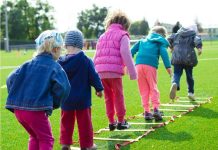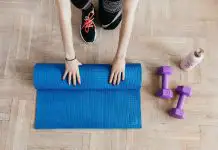Exercise and Children
Children in the U.S. get significantly less physical exercise than in past decades. This lack of activity has led to increased rates of obesity and generally lower levels of fitness among children.
What is the information for this topic?
Organized sports for children are at an all time high. These activities offer a valuable social outlet for children. However, they do not provide the fitness building opportunity that free play activities such as tag and hopscotch have traditionally supplied. Most youth sports are geared toward developing specific performance skills such as hitting a ball. They do not address the need for children to develop overall strength, endurance and flexibility. Adding to the problem is the more sedentary lifestyle of today’s children. Widespread use of computers, televisions and cars has decreased the amount of active time in an average day.
Exercise beginning in childhood helps prevent chronic illness later in life. Children’s hearts, lungs, muscles, and bones cannot develop without being exercised. Compared to children who lead sedentary lives, active children tend to have bigger and stronger hearts, greater muscle mass, less fatty tissue and stronger bones. Research over the last 40 years clearly links heart-lung fitness with reduced rates of stroke and heart disease.
Benefits of exercise for children include:
- increased size and number of blood vessels in the heart and muscles. This results in better blood circulation.
- increased flexibility of blood vessels. This decreases the chances of a blood vessel breaking under pressure to cause bleeding or stroke.
- increased pumping efficiency of the heart.
- increased ability to manage stress. This reduces the negative effects of stress on the body.
- decreased level of cholesterol and other blood fats.
- decreased or normal blood pressure. This reduces the risk of heart attack and stroke.
- improved sense of well-being and self-esteem.
- fewer injuries.
To improve the level of fitness among children, steps need to be taken at home, in the schools and the community. Things parents can do at home to help their children become more physically active from an early age include:
- allow toddles to move around freely. Small children should not be restrained in a playpen.
- put on music and encourage children to move to it.
- engage in active games such as tag.
- limit television and computer time.
- give presents that encourage activity such as bikes, skates or sneakers.
Many schools have taken physical activity out of the school program. This has contributed to the lack of fitness among children. Experts recommend the following health and fitness requirements for schools:
- mandatory physical education from kindergarten through twelfth grade
- primary physical education goal of producing physically fit children
- time allotment for physical education consisting of at least thirty minutes of aerobic activity three times a week
- placement of additional physical education teachers in the schools, especially in the lower grades
Finally, the community as a whole needs to view fitness as a priority when determining how to invest resources. For example, when deciding between building an ice hockey rink or a swimming pool, the pool may provide greater health benefits for a larger segment of the community. Individuals can help their communities make responsible fitness choices by becoming involved in the decision process.
Article type: xmedgeneral














































